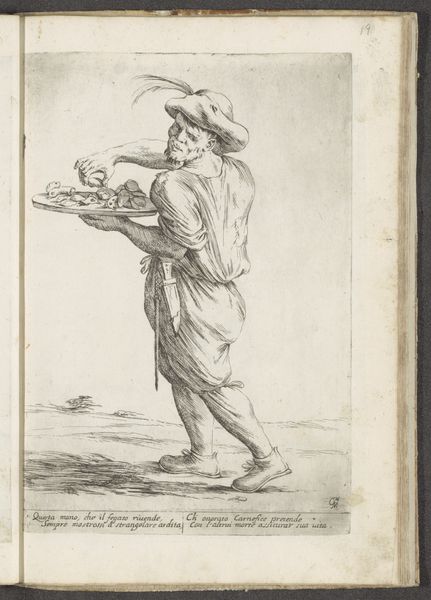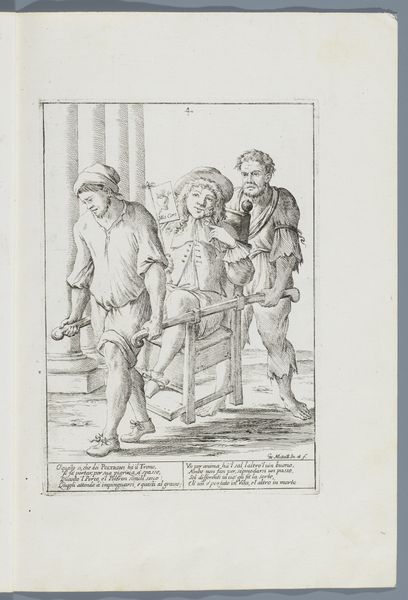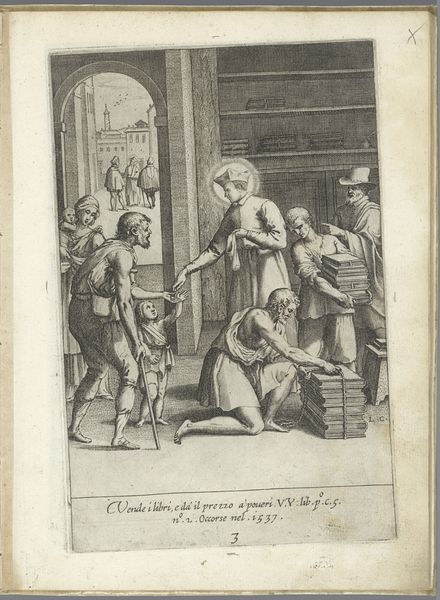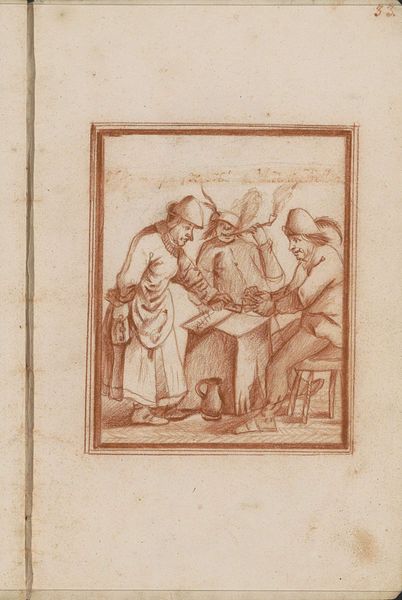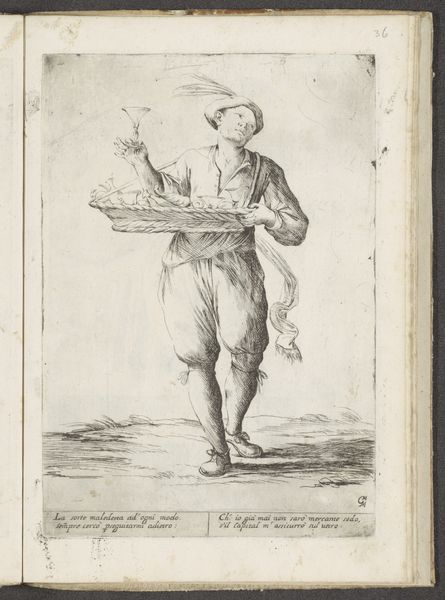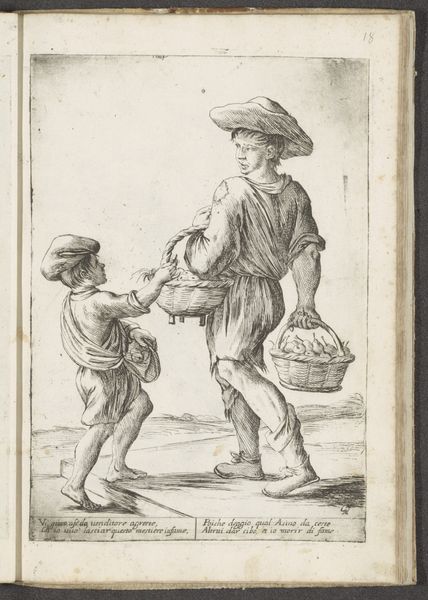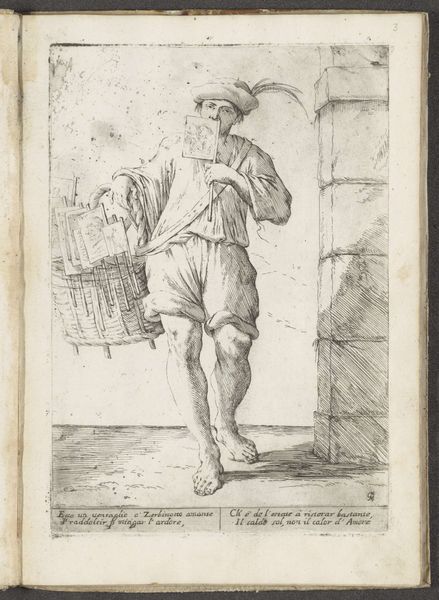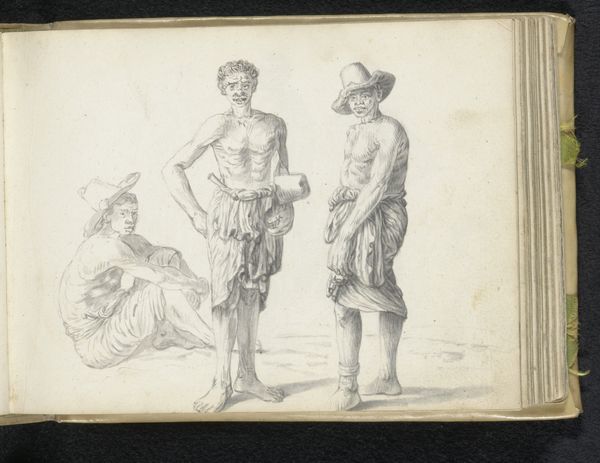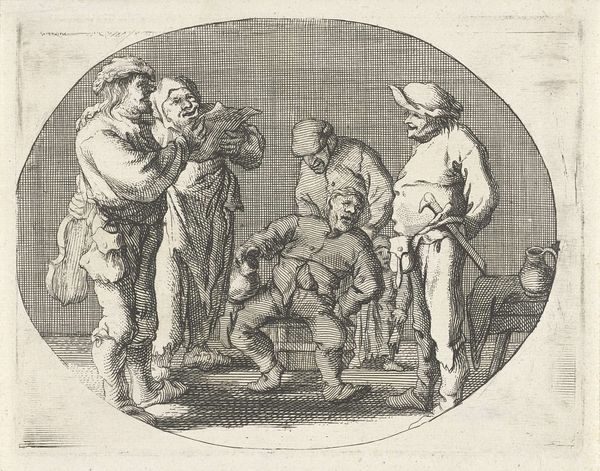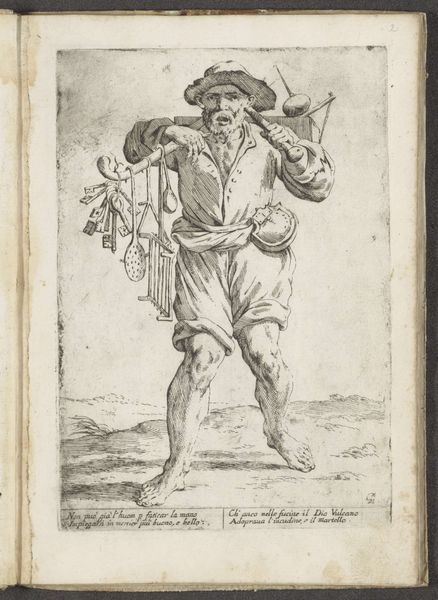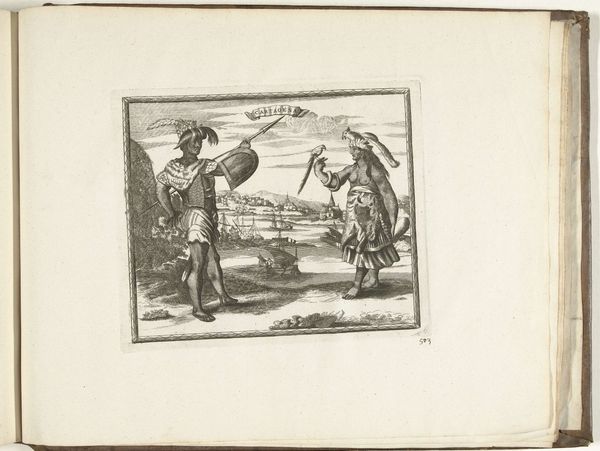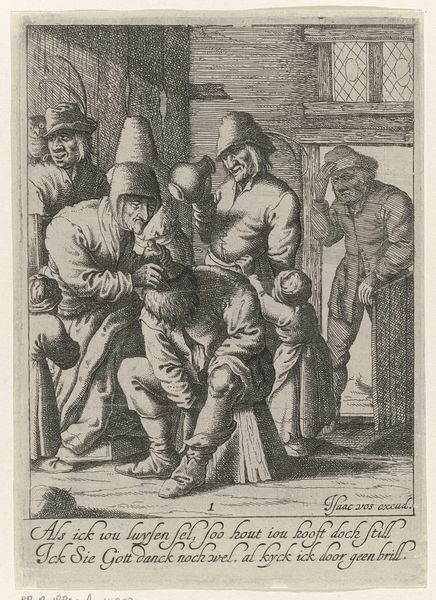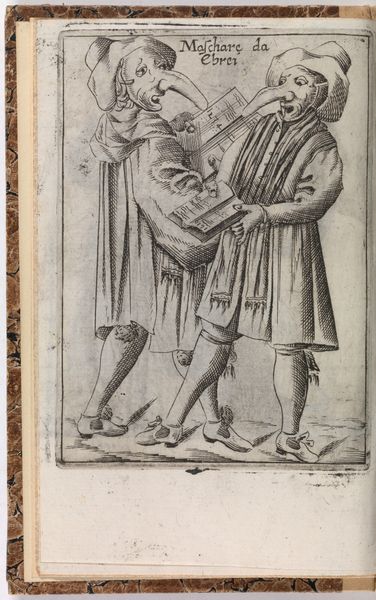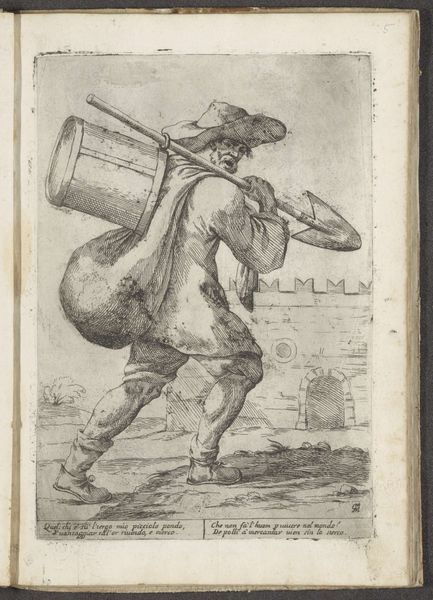
print, etching
#
narrative-art
#
baroque
# print
#
pen sketch
#
etching
#
figuration
#
pen-ink sketch
#
genre-painting
Dimensions: height 290 mm, width 190 mm
Copyright: Rijks Museum: Open Domain
Giuseppe Maria Mitelli created this etching titled 'Seller of Anise Liqueur and Seller of Matches' sometime between 1634 and 1718. It offers us a fascinating glimpse into the everyday life and commerce of 17th-century Europe. This artwork creates meaning through its depiction of two working-class figures, capturing their interactions within the urban landscape. Mitelli was an Italian artist, and this work reflects the social structures of his time. The figures represent the informal economy, with the seller of anise liqueur and the seller of matches embodying the entrepreneurial spirit of the era. The setting is the city streets, a place of both opportunity and hardship. To understand this artwork better, one might research the economic conditions of 17th-century Italy, looking at the guilds, trade, and systems of taxation that shaped the lives of ordinary people. We might ask, how did these individuals navigate the institutions of their time? Ultimately, this image serves as a reminder that art is deeply embedded in its social and institutional context.
Comments
No comments
Be the first to comment and join the conversation on the ultimate creative platform.
